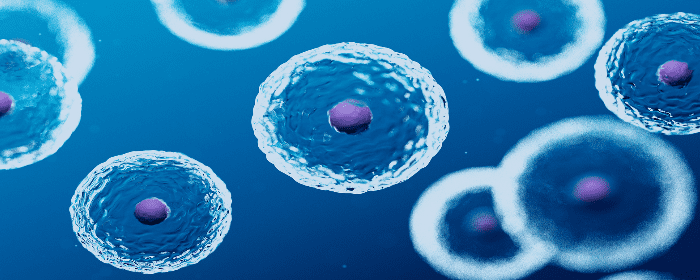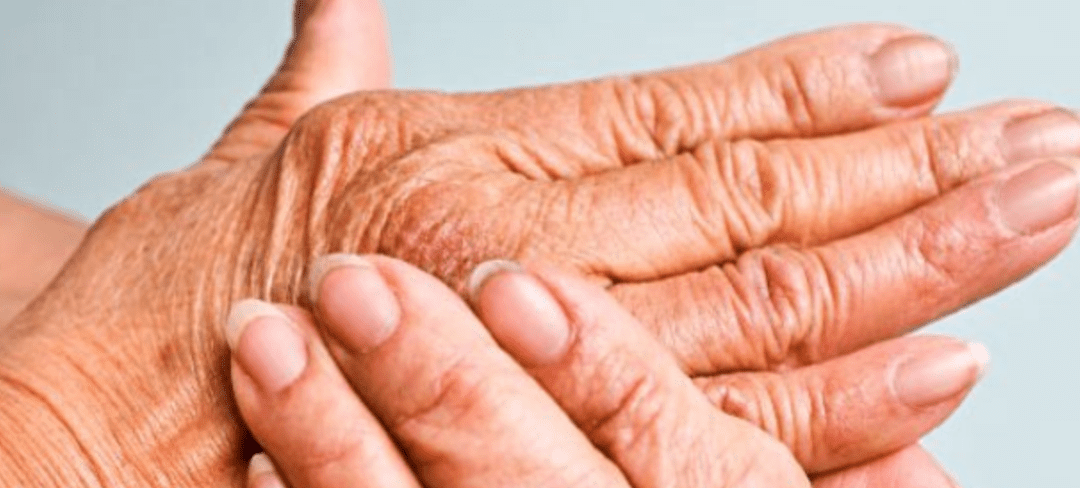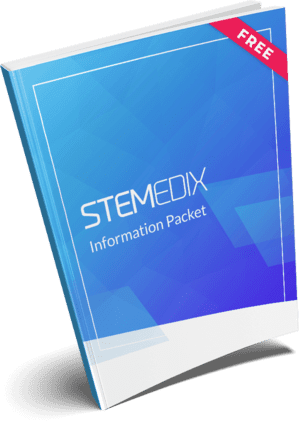
by Stemedix | Aug 16, 2021 | Degenerative Disc Disease, Stem Cell Therapy
Degenerative disc disease is one of the leading causes of neck and low back pain in adults. This medical condition results in many symptoms. It is caused by wear and tear on the spinal discs. In this article, we are going to talk about Stem Cell treatment of Degenerative Disc Disease.
Aside from back and neck aches, degenerative disc disease can result in:
- Numbness
- Hot or shooting pains
- Weakness
- A “giving out” sensation
- Muscle spasms and tension
- And more
The most common symptom of this condition is constant and low-level pain. Chronic pain can make it difficult to live a normal life. Because of the discomfort that comes from degenerative disc disease, researchers are looking for innovative treatments to help patients live more comfortably.
Recent Phase III Trial Results for Stem Cell Therapies
A recent randomized Phase III trial has shown that stem cell injections can help patients with degenerative disc disease. According to the study, a single injection provided long-term relief of back pain. The study was conducted using stem cell products from Mesoblast Limited, an Australian regenerative medicine provider.
Representatives from the company hope to meet with the Food and Drug Administration (FDA) to speed up the approval of their product. The product in question is known as “remestemcel-L.” The company has been developing this stem cell product for several years.
Like many stem cell treatments, the product is made using bone marrow to harvest mesenchymal stem cells. Those cells are then injected into patients’ bodies to reduce inflammation. The product inhibits the development of certain inflammatory substances. Decreased inflammation reduces the patient’s pain.
According to the trial report, sixty percent of the injected patients reported little to no pain after a year. After two years, 54% reported minimal or no discomfort. The injections provided the most pain relief for patients who were in the early stages of the disease.
Reduced Use of Opioids
Studies like the one discussed above have given many patients and medical professionals confidence in the potential of stem cells. In the study by Mesoblast Limited, more than 400 volunteers participated. Many of the patients who experienced pain relief decreased their use of opioids. Across the study group, opioid use declined by 40%.
Patients in the control group who received a saline injection actually increased their use of opioids. Because of this, the company hopes that the FDA will fast-track the approval of remestemcel-L as a standard treatment for degenerative disc disease.
Future studies will be necessary to determine the full potential of stem cell therapies. Still, many patients have experienced significant improvements in their health and wellbeing by using stem cell therapies. If you are interested in using stem cell treatment for Degenerative Disc Disease contact a care coordinator today to learn more!

by Stemedix | Aug 9, 2021 | Multiple Sclerosis, Stem Cell Therapy
In the United States, nearly one million people suffer from multiple sclerosis (MS). That is nearly one in 330 people nationwide. While the condition is not exceedingly common, it also cannot be classified as rare. The current number of people who have MS has doubled which is why more researchers have been delving into ways to treat the condition. For MS, the mean age of patients at the time of diagnosis is 34 years. The vast majority of patients are diagnosed between the ages of 20 and 50. However, MS has also been known to affect children and teenagers. In this article, we are going to talk about the stem cell transplant benefits for patients with MS.
The Slowing of Progression
Much of the research and medical development for MS have been focused on slowing the progression of the disease. There are currently several medications on the market that are geared toward doing just that. There has also been stem cell research done that has shown positive results.
While many drugs have succeeded in slowing the progression rate of MS, one important downside is the cost. Long-term use of these medications can affect a patient’s budget. If remission is gained, however, the patient can discontinue those drugs indefinitely.
One experiment involved patients from four countries, including the United States. All of the patients were given chemotherapy. Following this treatment, half were given drugs and the other half were administered stem cell therapy.
All patients that received the stem cell injections were clear from recurring symptoms after a year. Only six out of 52 had recurring symptoms after three years. The results of this experiment were released just a few years ago and have garnered the attention of researchers, as well as the desire for more trials.
Older Research
Stem cell therapy for the treatment of MS has been around for longer than most people realize. It began in the 1990s with hematopoietic stem cells, or HSC transplants, for patients that were not responding well to the conventional medications given at the time.
The method used for some of these trials was immunoablation. This is the process of partially destroying a faulty immune system and then replacing it with newer, healthier cells. Researchers have used it in further studies based on its early encouraging results. With this in mind, there may be hope on the horizon for the use of stem cells to achieve remission. If you are interested in scheduling a consultation contact a care coordinator today!

by admin | Aug 6, 2021 | Stem Cell Therapy, Mesenchymal Stem Cells, Stem Cell Research
It is estimated that over 126 million Americans, or nearly one in two adults, are affected with some form of musculoskeletal disorder, condition, or injury – a number comparable to the percentage of the population currently living with a chronic lung or heart condition[1].
While there are a number of treatment modalities proven to be effective for treating musculoskeletal disorders, conditions, and injuries, using stem cells appears to be among the most explored promising potential option of these methods.
With mesenchymal stem cells (MSCs) being the preferred source of stem cell, mostly because of their abundance (including sources such as bone, tendon, skin, and blood) and ability to differentiate to many different tissues, orthopedic surgeons have focused largely on MSC therapies for healing a number of specific orthopedic conditions, including the healing of fractures, regenerating articular cartilage in degenerative joints, healing ligaments or tendon injuries, and replacing degenerative vertebral discs.
The goal of the comprehensive literature review conducted by Akpancar et al. was to evaluate the most recent progress in stem cell procedures and current indications in the orthopedic clinical care setting.
Specifically, as part of this review, the authors found that therapeutic applications using stem cells, and MSCs in particular, allow the stem cells to be used as progenitor cells as a way to enhance the healing and repair process. The authors point out that while many sources of stem cells have been considered for use in orthopedic procedures, including bone marrow-derived MSCs (BM-MSCs), adipose-derived stem cells (AD-MSCs), synovial tissue-derived stem cells (ST-MSCs), peripheral blood-derived progenitor cells, and bone marrow concentrate, the optimal source of stem cells has yet to be determined.
In addition, Akpancar et al. while reviewing the orthopedic indication of stem cells on various musculoskeletal disorders, conditions, and injuries, found that in large part, stem cell therapy demonstrated positive results in improved healing in a variety of orthopedic indications, including major orthopedic bone-joint injuries, osteoarthritis-cartilage defects, ligament-tendon injuries, as well as other conditions.
Despite these findings, the authors also point out that while there have been large amounts of preclinical studies conducted and there continues to be increasing interest in performing additional studies on human subjects, the current findings gathered from preclinical studies are still preliminary. Considering this, the authors recommend additional research be conducted to evaluate the safety and efficacy of stem cells therapy in orthopedic surgery.
Source: (2016, August 16). The Current Perspectives of Stem Cell Therapy in Orthopedic Surgery. Retrieved from https://www.ncbi.nlm.nih.gov/pmc/articles/PMC5253188/
[1] “One in two Americans have a musculoskeletal condition: New report ….” 1 Mar. 2016, https://www.sciencedaily.com/releases/2016/03/160301114116.htm.

by Stemedix | Aug 2, 2021 | Stem Cell Therapy
Arthritis is a common affliction. Seniors, in particular, tend to experience arthritis in their shoulders, although athletes may also be affected. The bones and muscles in the shoulder joints experience daily use throughout a person’s life. After many years of constant movement, the tissue in and around joints wears down. This can lead to shoulder arthritis. Traditional treatments for this condition require a long and difficult recovery process. Many patients are unable to engage in their normal routines and activities, due to arthritis shoulder pain. Fortunately, stem cells for shoulder arthritis may have the potential to effectively treat shoulder arthritis. Below, we will examine how this innovative approach has helped some patients heal and experience pain relief.
Types of Shoulder Arthritis
The human shoulder has more range of motion than any other joint on the body. Because of this, it often loses functionality as you age. Usually, this is due to everyday wear and tear.
Osteoarthritis is the most common form of shoulder arthritis. But it is not the only type that patients experience.
Other types of arthritis in the shoulder include:
- Rheumatoid arthritis, caused by underlying inflammation
- Post-traumatic arthritis triggered by prior shoulder injuries
- Rotator cuff tear arthropathy from a prior rotator cuff tear
These are only a few examples of the types of arthritis that may affect the shoulder joint as you age.
Regenerative Therapy and Stem Cells Could Help
Traditional medical treatments for shoulder arthritis include physical therapy and surgery. Many of these options are invasive and require a long recovery period.
However, stem cell therapy is a minimally invasive outpatient procedure that many patients are finding to be helpful. There is some evidence that stem cell therapies may decrease arthritis pain and encourage the growth of new tissues. Stem cell therapies are all-natural. That is because the stem cells used in the treatments come from adult stem cells.
They may be found in adipose (fat), bone marrow, or umbilical cord (Wharton’s Jelly) tissues. Some treatments may also include platelet-rich plasma (PRP) that is drawn from your blood.
These mesenchymal stem cells will then be administered to the problem area to help your body heal naturally. Once injected, the stem cells and/or PRP will encourage your body to engage in its natural healing functions. Growth factors in stem cells encourage the regeneration of tissue and decrease in inflammation.
No matter what type of arthritis a patient may be facing, stem cells for shoulder arthritis offer a promising option for patients to explore. Some patients may also explore additional modalities such as prolozone (ozone therapy with added vitamins) or peptides (amino acids) in their healing plans.

by admin | Jul 30, 2021 | Stem Cell Research, Multiple Sclerosis, Stem Cell Therapy
Typically understood to support hematopoiesis and to produce the cells of the mesodermal lineage, mesenchymal stem cells (MSCs) found in bone marrow, fat, and other tissues of the body, have recently been found to contain additional properties that include immunomodulator and neurotrophic effects.
Considering earlier studies that have demonstrated favorable effects of MSC treatments in a variety of conditions – including stroke, multiple sclerosis, multi-system atrophy, and amyotrophic lateral sclerosis, Petrou et al. performed this double-blind study as a way to evaluate the best way of administration and the safety and clinical efficacy of MSC transplantation – specifically in patients with active and progressive multiple sclerosis.
The response of the 48 patients with progressive multiple sclerosis and with displaying evidence of either clinical worsening or activity during the previous year in this study were evaluated after being treated intrathecally (IT) or intravenously (IV) with autologous MSCs or with sham injections. Having identified a critical and unmet need for treatment, the goal of Petrou et al.’s study was to examine the therapeutic efficacy of MSC transplantation in this specific population.
Over the course of this controlled clinical trial, participants were randomly assigned to three treatment groups and treated (either intrathecally or intravenously) with autologous MSCs or with sham injections. At the 6-month mark, the authors of this study retreated half of the patients in both the MSC-IT and MSC-IV groups with MSCs, while the remaining participants were treated with sham injections. The same process occurred with patients initially treated with sham injections; meaning that at the 6-month mark, half were either treated with MSC-IT or MSC-IV.
Prior to the start of this study, Petrou et al. established a number of primary and secondary endpoints. Predetermined primary endpoints of this study included: the safety of the MSC-IV and MSC-IT treatments and the difference among the three groups in relation to performance on the Expanded Disability Status Scale (EDSS) at 6- and 12-month intervals. Predetermined secondary endpoints included the difference between the sham-treated and MSC-IT or MSC-IV treated group in the number of relapses and the relapse rate, the number of MRI gadolinium-enhancing lesions, the annualized rate of change in the T2 lesion load on MRI, percent brain volume change, performance on a series of physical and cognitive functions, and the retinal nerve fiber layer thickness.
At the conclusion of this 14-month trial, the authors reported that the study demonstrated positive results in all predetermined primary endpoints. More specifically, throughout the course of this study, the authors discovered that significantly fewer patients experienced treatment failure in the MSC0IT and MSC-IV groups compared with those in the sham-treated group. Additionally, over the course of the following year, nearly 59% and 41% of patients treated with MSC-IT and MSC-IV exhibited no evidence of multiple sclerosis activity; this is compared with less than 10% of patients in the sham-treated group.
Significant improvements of those receiving MSC-IT treatment (compared to sham treatment) were also observed in the following: ambulation index, the sum of functional scores, 25-foot timed walk test, 9-hole peg tests, PASAT and OWAT/KAVE cognitive tests, and newer biomarkers, including retinal nerve fiber layer and motor network. The authors also report beneficial, but less significant effects were observed in the MSC-IV groups.
Although the authors report a number of limitations associated with this study, including a small number of patients in each group, the short duration of the study, and the crossover design of the study (which could have resulted in a “carry-over” effect from the first cycle of treatment), they also conclude that the clinically significant findings observed in patients with progressive multiple sclerosis who were previously unresponsive to traditional or conventional therapies provide clear evidence of short-term efficacy and possible indications of neuroprotection induced by administration of autologous MSCs in patients with progressive multiple sclerosis.
In addition, the authors found that intrathecal administration of MSCs appears more beneficial than intravenous, as well as the potential benefits provided by receiving repeated injections of MSCs.
As such, Petrou et al. conclude by calling for a larger phase III study to confirm these findings and as a way to further evaluate the therapeutic potential of autologous MSCs in neuroinflammatory and neurodegenerative diseases, including active progressive multiple sclerosis.
Source: (2020, December 1). Beneficial effects of autologous mesenchymal stem cell … – PubMed. from https://pubmed.ncbi.nlm.nih.gov/33253391/

by Stemedix | Jul 26, 2021 | Rheumatoid Arthritis, Stem Cell Therapy
There are a number of things that can cause arthritis, a painful condition that causes stiffness in joints. In Rheumatoid Arthritis (RA), the body’s immune system attacks the musculoskeletal system, causing inflammation that leads to arthritis pain. Over time, RA can cause a number of problems, including cartilage deterioration, swelling, and excess synovial fluid at the joint. In this article, we talk about how Stem Cell Therapy can help to treat Rheumatoid Arthritis.
Using Stem Cell Therapy to Treat Rheumatoid Arthritis
Because RA is a chronic condition, there is no cure. This means that treatment focuses on preventing attacks and easing symptoms. While there are medications that can help to tamp down the autoimmune response that causes RA pain, symptom management tends to rely on medication to relieve pain, which can be difficult to moderate.
Instead, some patients are seeking out stem cell therapy. Stem cells have the ability to differentiate into other cell types. By administering mesenchymal stem cells (MSCs) systemically and directly to problematic joints, it may potentially help to regrow cartilage tissue and ease pain from rheumatoid arthritis.
How Stem Cell Therapy Can Benefit RA Patients
By taking a different approach to the treatment of RA, stem cell therapy offers potential relief that traditional treatments have not been able to provide to patients, including:
Regenerating Tissue
Because stem cells are able to differentiate into other cell types, they can be particularly useful for patients suffering from RA. When these stem cells are injected into a joint, they can help to rebuild the cartilage that cushions joints, counteracting the damage from RA.
Stem cells also have the potential to help regenerate other damaged tissues as well, including the synovium tissues, which help lubricate joints to keep them from becoming inflamed.
Regulating the Autoimmune Response
Stem cells have shown to be safe and promising in helping reduce the inflammatory response that results from the autoimmune attacks behind RA. Stem cell therapy has been used in the treatment of other autoimmune diseases, including Crohn’s disease and multiple sclerosis, and it shows promise for RA, as well. So yes, Stem Cell Therapy can help to treat Rheumatoid Arthritis.
Reducing Further RA Damage
Stem cell therapy offers the possibility of reducing further RA attacks on joints that may not yet be affected by the disease. With the potential to limit the autoimmune responses that cause RA damage and to instead encourage healing and tissue growth, stem cells may be able to slow the impact of rheumatoid arthritis. This may allow patients to experience less pain and preserve their quality of life. If you would like to schedule an appointment to treat your RA, contact a care coordinator today!







 St. Petersburg, Florida
St. Petersburg, Florida
